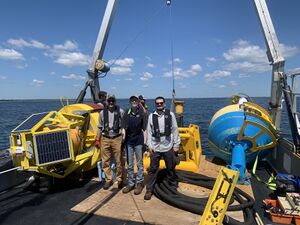Introduction
Knowledge sharing and succession planning are ongoing processes. It can be helpful to evaluate progress continuously, including whether succession planning and knowledge sharing are being used consistently, whether the methods are effective, and whether any gaps or challenges need to be addressed. The needs and situation of the organization will also change over time, along with the workforce needs and trends in the hydropower industry as a whole.
Sub-Steps
- Evaluate and Make Changes: Use subjective and objective elements to evaluate the success of your program. Incorporate surveys to collect employees’ opinions of knowledge sharing landscape and culture.
- Make Process Recurring: Update tools consistently, at least yearly, and incorporate planning into regular organizational processes.
Tools and Templates
Evaluate and Make Program Changes
Periodically evaluating succession planning and knowledge sharing programs will enhance program effectiveness and expose areas for improvement. The goal is to identify the lessons learned and what will be done differently going forward to ensure a more positive outcome. The following Program Evaluation Matrix can be used to broadly evaluate the success and improvement needs of knowledge sharing and succession planning efforts.
Tool: Program Evaluation Matrix
| Knowledge Sharing | Succession Planning |
|---|---|
| Subjective | |
Staff Engagement and Attitudes About Knowledge Sharing
Staff Adoption of Knowledge Sharing
Knowledge Quality
|
Attitudes About Future at Organization
|
| Objective | |
|
|
There are both subjective and objective elements that should be used to evaluate the success of these programs. The subjective elements should be self-assessed by individual employees, preferably through a department-wide survey. These assessments can be used to measure changes over time; therefore, the survey should be conducted on a regular basis
There is also value in a “refresh” cycle to dig deeper into the approach (aside form annual review) that allows for adjustments and that follows industry and workforce and climate trends. This can be done every few years to ensure that the tool remains up to date if external circumstances change drastically.
Make Recurring
Assessment of your hydropower organization’s situation is not a one-time process. The knowledge sharing and succession planning strategy for an organization should be updated on a regular basis, particularly as organizational or industry changes occur. Succession planning should be incorporated into regular organizational processes, such as employee performance reviews, and used as new situations arise that have workforce implications. The effort should begin and end with the executive team, as funding and support structures will be needed for success. There must be someone actively monitoring progress against the measures and plans provided throughout this toolkit so that these efforts do not slip through the cracks.
However, any level of management can create a culture that values knowledge sharing and begin implementing the practices discussed throughout this toolkit. It will take effort and time, but the benefits will be faster project completion, better team performance, improved innovation capabilities, and higher overall organizational performance.
